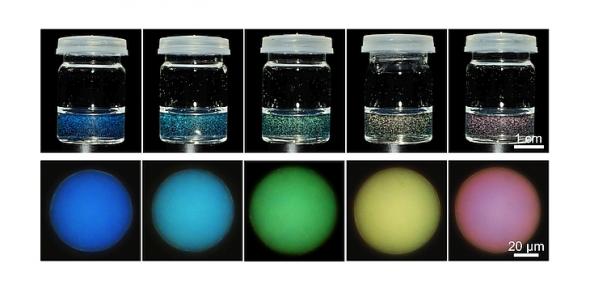
Block copolymers (BCPs) are an interesting class of material that has been proven effective in fabricating photonic materials, due to their capability to self-assemble into structures on the scale of the wavelength of visible light. When compared with other materials employed in bottom-up self-assembly (e.g., colloids), BCPs possess several advantages, such as: rapid kinetics, macroscopic ordering of the self-assembled structures, and tolerance to a high loading of functional additives. Moreover, the possibility to manipulate the produced coloration simply by tuning the molecular structure of the underlying BCPs allows for their directed-assembly into more complicated microstructures. A wide variety of photonic architectures have been self-assembled from BCPs, ranging from long-range ordered structures (e.g., closely-packed micelles, hexagonally-packed cylinders, double diamond, gyroids, cubic and correlated networks), to systems where only short-range order is present, such as photonic glasses.
The field of BCP photonics has grown steadily, with two types used to produce photonic materials: linear block copolymers (LBCPs) and brush block copolymers (BBCPs). Compared to LBCPs, BBCPs have densely grafted side chains and the strong steric hindrance of these side chains significantly increases the rigidity of the polymer backbone, which extends the conformation of the BBCP and reduces chain entanglement. In turn, these lead to large and well-defined molecular dimensions and rapid self-assembly kinetics. Therefore, since 2016 there has been a clear transition from LBCP to BBCP-based photonic systems.
In our group we are investigating: (i) how the confined self-assembly of BBCPs within a droplet can be used to produce photonic pigments; (ii) methods to enhance the self-assembly or to add functionality; and (iii) the synthesis of biocompatible and biodegradable BBCP photonic systems.
